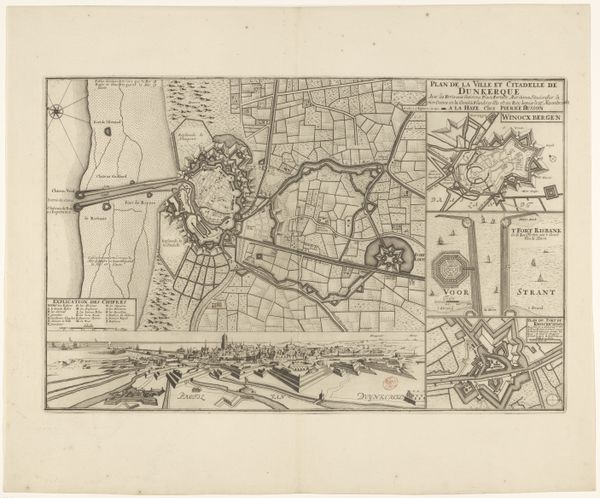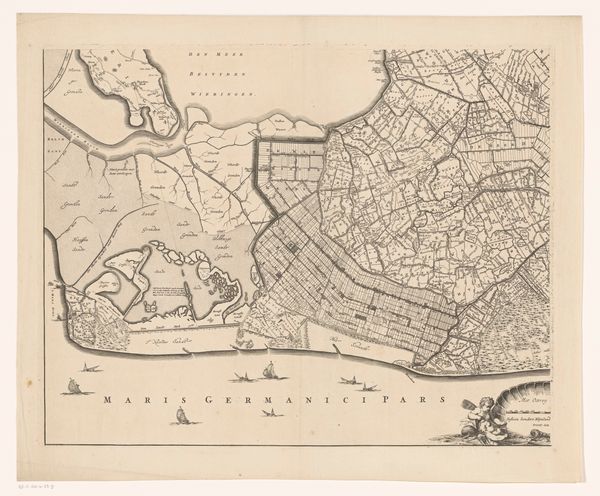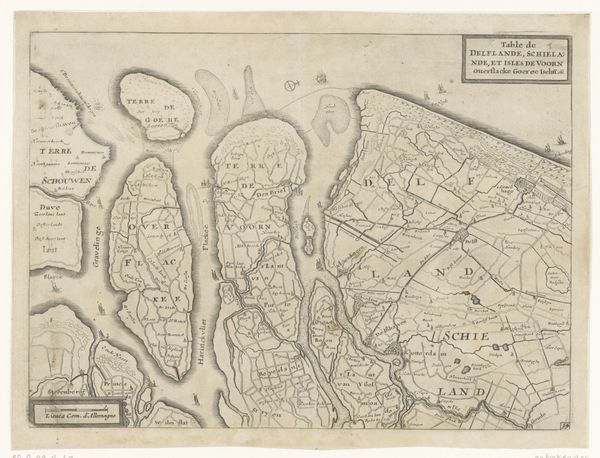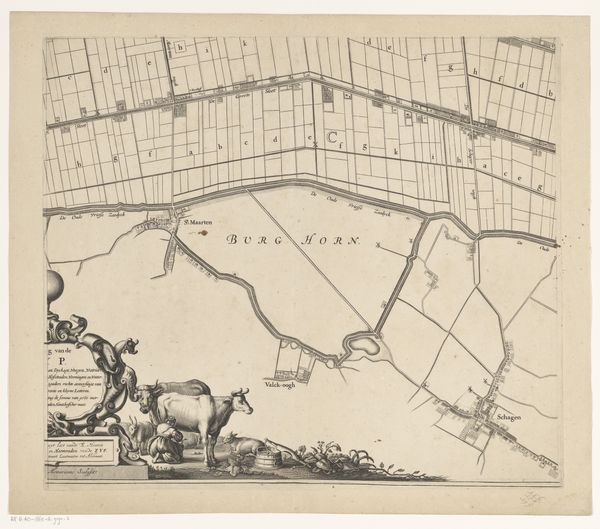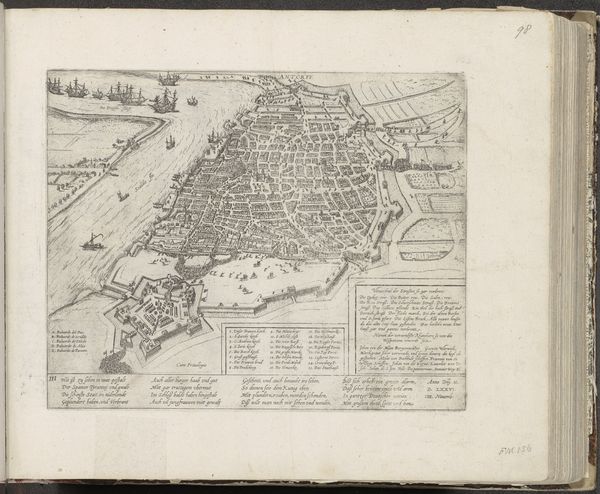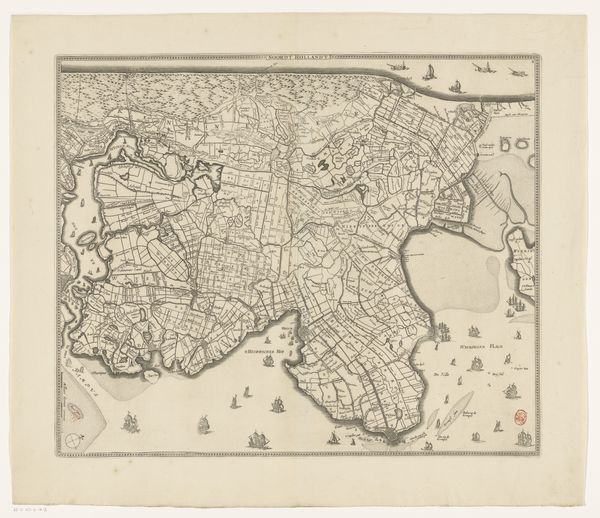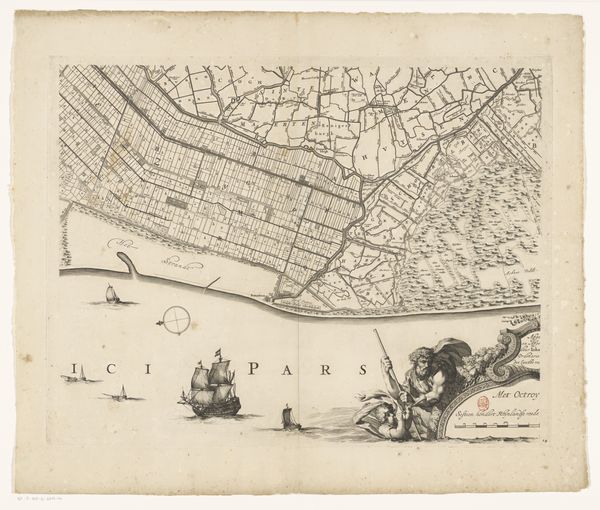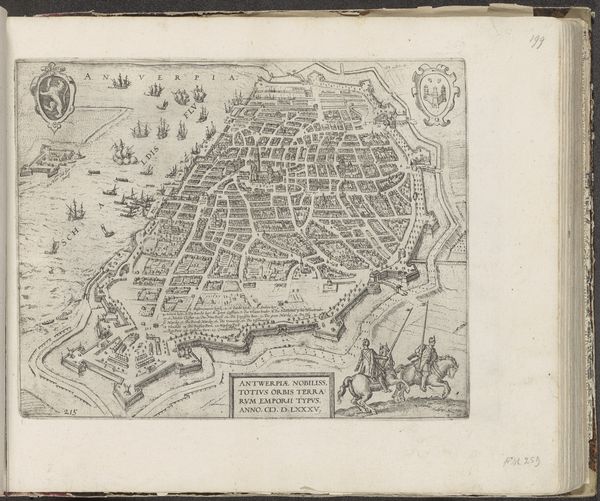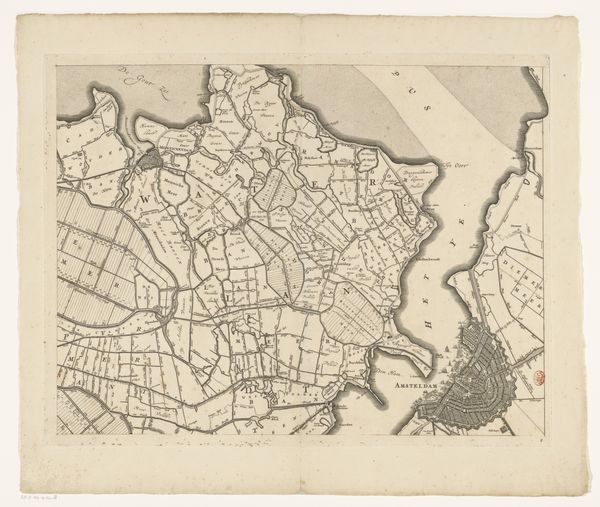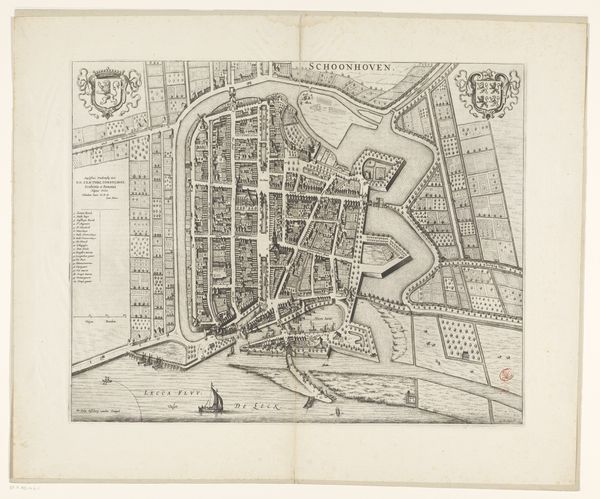
drawing, print, paper, ink, engraving
#
drawing
#
aged paper
#
baroque
# print
#
pen sketch
#
sketch book
#
landscape
#
paper
#
personal sketchbook
#
ink
#
sketchwork
#
geometric
#
pen-ink sketch
#
pen work
#
sketchbook drawing
#
storyboard and sketchbook work
#
sketchbook art
#
engraving
Dimensions: height 435 mm, width 513 mm
Copyright: Rijks Museum: Open Domain
Curator: This engaging work is entitled "Kaart van de grietenij Barradeel," a map created sometime between 1698 and 1718 by an anonymous artist, employing the techniques of drawing and engraving in ink on paper. Editor: It gives such an incredible sense of place, even though it is so long ago. I am struck by how utilitarian yet ornate the piece is – almost decorative. Curator: Indeed, the combination of functionality and aesthetic appeal is a key element of cartography from this period. Mapping at this time was commissioned and displayed, asserting civic pride as well as offering utility. Consider too, the labor and expertise that goes into creating such detailed imagery—surveying, engraving, printing... Editor: And how would this have been circulated, displayed? Was it strictly a civic endeavor, tied to government and institutions? Did the artisan cartographers who created such images ever attain any social recognition or wealth, or where they relegated as craftsmen instead of “artists”? Curator: It likely would have been commissioned by the local government, intended for display in council chambers or the homes of wealthy landowners. These artisans held respected, skilled positions. Think about their workshops, the apprentices learning the craft… This speaks to a sophisticated network of knowledge transfer and production. And, paper and ink in themselves were valuable commodities. Editor: Looking closer, it feels like two distinct halves fighting for dominance, with decorative elements like cherubs and elaborate cartouches vying for attention with functional, practical land divisions. One aspect speaks to art, and another to commerce, power, and a sense of ownership of this place. Curator: I think your point hits at a cultural intersection of practicality and display of wealth through skilled artisanry, deeply embedded in the social and institutional fabric. Editor: Ultimately, both the production of this object and the land itself, shown so meticulously, serve a specific function, reflecting very human activities and their context. I appreciate seeing the overlap. Curator: Precisely, observing how practical craftsmanship intersects with societal structures highlights both the value of tangible skill and the pervasive reach of power, which resonates still today.
Comments
No comments
Be the first to comment and join the conversation on the ultimate creative platform.

